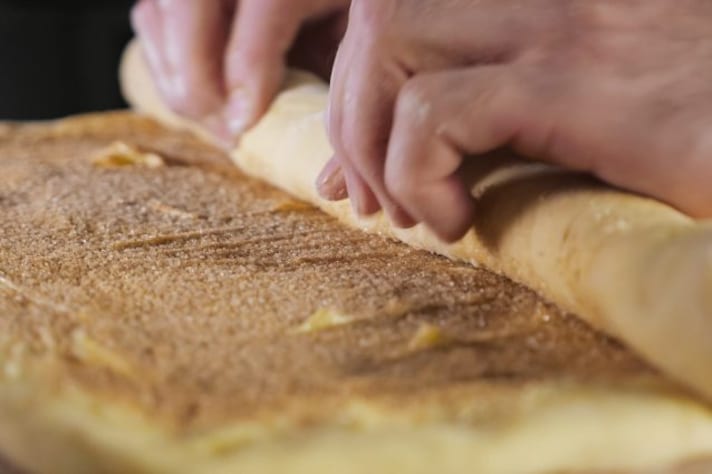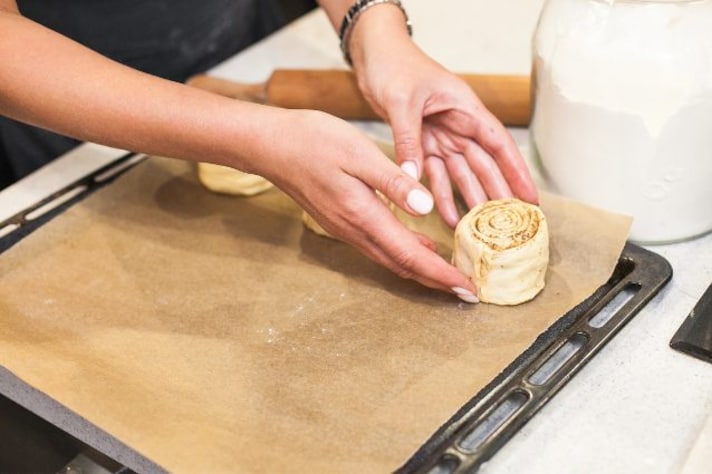
Cinnamon rolls are the epitome of indulgent comfort food, with their soft, doughy centers and sweet, buttery layers. But while they seem simple to make, there are a few key factors that can make or break the perfect roll. One common mistake? Using melted butter in the dough or filling. Although it might seem like the easiest option, melted butter can ruin the texture of your cinnamon rolls before they even hit the oven.
Melted Butter is The Recipe for a Soggy Disaster
When making cinnamon rolls, butter plays a crucial role in the structure and flavor. Melted butter, however, has a tendency to create a soggy dough that doesn’t rise as well. This is because when butter is melted, the fat separates from the water, leaving you with a mixture that soaks into the dough rather than integrating smoothly. In the filling, melted butter makes it harder for the cinnamon sugar to stick to the dough, causing it to pool at the bottom rather than staying evenly distributed. The result? Rolls that are dense and greasy at the bottom, lacking the light, fluffy texture you expect.

Why Melted Butter Affects Texture
The beauty of cinnamon rolls lies in the balance between soft dough and buttery layers. Melted butter disturbs that balance. The water content in melted butter saturates the dough, preventing it from developing the proper structure. This is particularly important in yeast doughs like cinnamon rolls, where the dough needs to be able to rise and expand. Melted butter simply adds too much moisture, compromising the dough’s ability to hold its shape. Plus, the rich, flaky texture we crave in cinnamon rolls comes from butter staying solid long enough to create those layers—something that melted butter just can’t do.
Hard Butter Is Not the Answer Either
Now that we’ve covered the pitfalls of melted butter, let’s address the other extreme—using hard butter. You might think that solid butter would be better, but hard butter is another no-go. If butter is too cold, it won’t spread easily over the dough, and you risk tearing the delicate dough as you try to work it in. Additionally, hard butter won’t melt evenly during baking, leaving you with uneven pockets of butter throughout the rolls. This can result in an inconsistent bake, where some parts of the roll are too dry, and others are too greasy.

Softened Butter is Where It's At!
So, what’s the butter sweet spot? Softened butter is your best friend when making cinnamon rolls. Softened butter is spreadable, making it easy to create an even layer in both the dough and the filling. It incorporates into the dough without over-saturating it, allowing the rolls to rise properly and develop that fluffy texture. In the filling, softened butter ensures the cinnamon sugar sticks evenly and melts slowly during baking, creating the perfect, gooey layers we all love.
By using softened butter, you’re giving your cinnamon rolls the best chance to shine—light, tender, and filled with the rich flavor that makes them irresistible. So next time you’re whipping up a batch, skip the melted butter and go for that perfectly softened middle ground. Your taste buds will thank you!
;Resize,width=767;)
